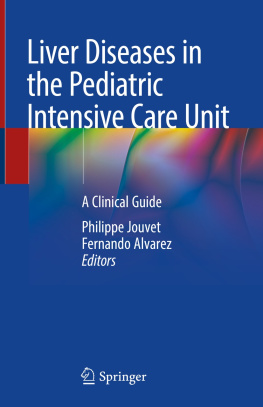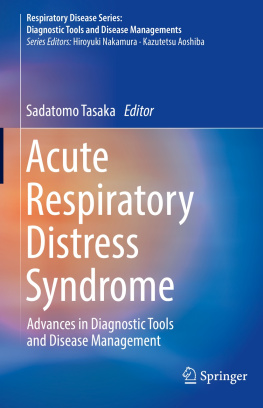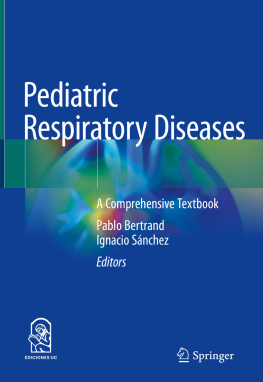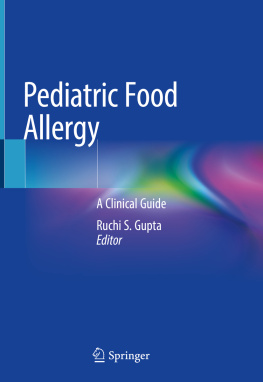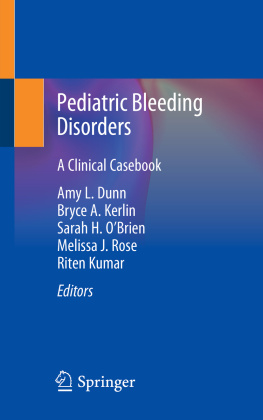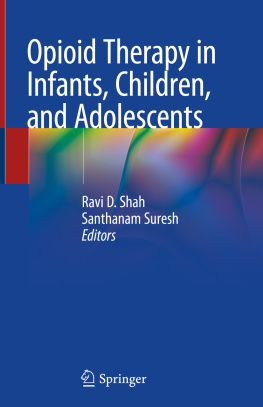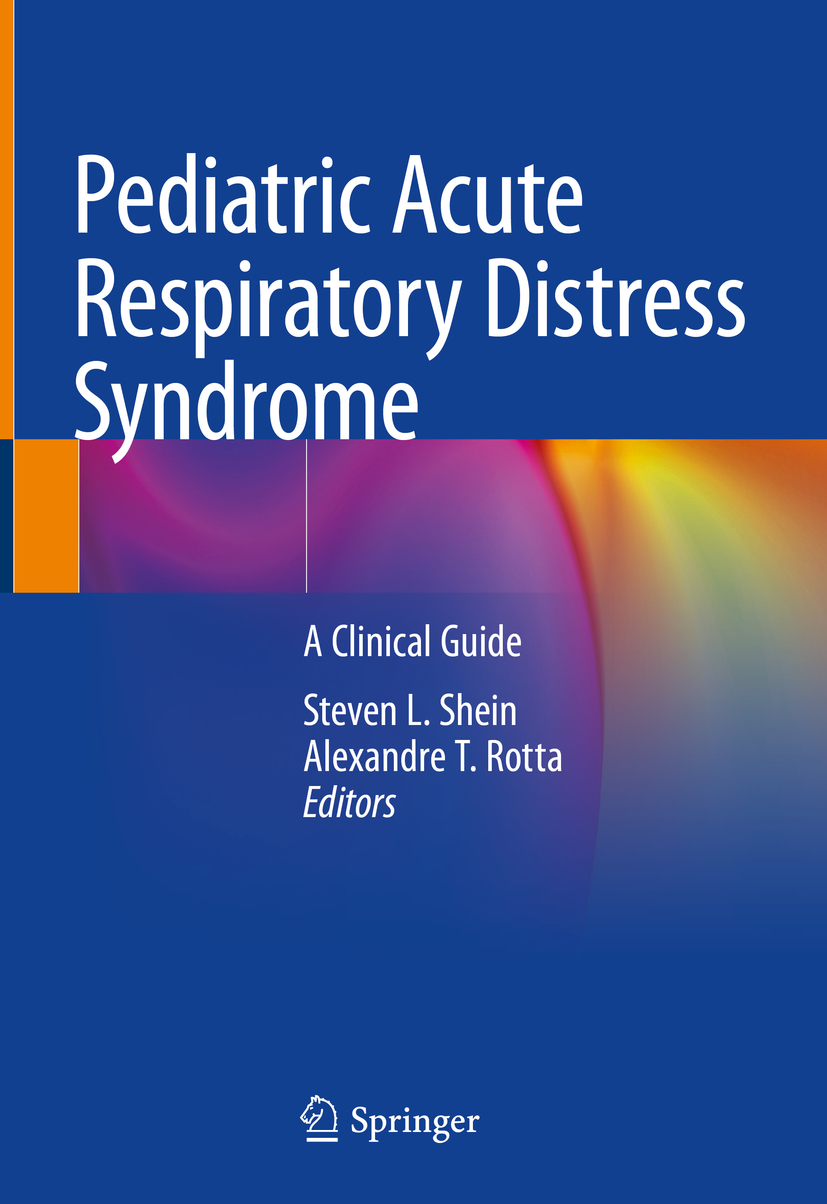Editors
Steven L. Shein and Alexandre T. Rotta
Pediatric Acute Respiratory Distress Syndrome
A Clinical Guide
Editors
Steven L. Shein MD
Rainbow Babies & Childrens Hospital, Case Western Reserve University, Cleveland, OH, USA
Alexandre T. Rotta MD, FCCM
Duke University School of Medicine, Duke University Medical Center, Durham, NC, USA
ISBN 978-3-030-21839-3 e-ISBN 978-3-030-21840-9
https://doi.org/10.1007/978-3-030-21840-9
Springer Nature Switzerland AG 2020
This work is subject to copyright. All rights are reserved by the Publisher, whether the whole or part of the material is concerned, specifically the rights of translation, reprinting, reuse of illustrations, recitation, broadcasting, reproduction on microfilms or in any other physical way, and transmission or information storage and retrieval, electronic adaptation, computer software, or by similar or dissimilar methodology now known or hereafter developed.
The use of general descriptive names, registered names, trademarks, service marks, etc. in this publication does not imply, even in the absence of a specific statement, that such names are exempt from the relevant protective laws and regulations and therefore free for general use.
The publisher, the authors, and the editors are safe to assume that the advice and information in this book are believed to be true and accurate at the date of publication. Neither the publisher nor the authors or the editors give a warranty, expressed or implied, with respect to the material contained herein or for any errors or omissions that may have been made. The publisher remains neutral with regard to jurisdictional claims in published maps and institutional affiliations.
This Springer imprint is published by the registered company Springer Nature Switzerland AG
The registered company address is: Gewerbestrasse 11, 6330 Cham, Switzerland
To my parents, Jeff and Diane, and brother, David, thank you for all of your support growing up. To my countless teachers, mentors, co-residents, co-fellows, and all the rest at CWRU, RBC, and CHP, thanks for teaching me and being in the trenches with me. To my wife, Monica, and my children, Jack and Emily, thank you for your love, your support, your patience, your understanding, your hugs, and your laughter. And to all of the parents and families who have permitted me to care for their critically ill loved one, thank you for the privilege of doing so.
Steven L. Shein
To my parents, Enio and Newra, for their contagious love for medicine. To my brother, Francisco, for setting the bar so high. To my mentor, Ashok, for showing me the way. To my teachers, Brad and David, for all the knowledge. To my wife, Kristy, and my daughters, Ashlynn and Valentina, for their encouragement, support, sacrifices, patience, and unconditional love.
Alexandre T. Rotta
Preface
In 1967, Ashbaugh and colleagues described a group of predominantly adult patients with various underlying conditions who developed a peculiar form of respiratory failure. Regardless of the inciting etiology, these patients shared a common rapid progression to respiratory failure with hypoxemia, diffuse infiltrates on chest radiographs, decreased lung compliance, and decreased functional residual capacity, requiring the application of positive end-expiratory pressure (PEEP) to improve oxygenation. This condition, which we now know as the acute respiratory distress syndrome (ARDS), was based on somewhat vague diagnostic criteria and was not specific enough to exclude other medical conditions with similar manifestations.
Our understanding of ARDS has increased greatly during the past five decades. ARDS definitions and diagnostic criteria have also evolved over time, including the Murray Lung Injury Score (1988), the American-European Consensus Conference Definition (1994), and the Berlin Definition (2012) put forth jointly by the European Society of Intensive Care Medicine (ESICM) and the Society of Critical Care Medicine (SCCM). Each of these definitions represented a step forward in delineating this important diagnosis, yet the applicability of these adult-centric definitions had significant limitations for children since they did not consider ARDS factors germane to the pediatric patient.
The lack of a pediatric-specific ARDS definition, coupled with a rapidly growing body of literature on children with acute hypoxemic respiratory failure, led an expert panel to assemble the Pediatric Acute Lung Injury Consensus Conference (PALICC, 2015) and put forth the first definition of pediatric ARDS (PARDS). This definition represented a major step forward for those involved in PARDS diagnosis, treatment, and research. It provided the framework that would allow for comparisons across multiple institutions, helped define the actual worldwide prevalence of this condition, and clarified the role of various treatment modalities and their impact on outcomes.
This textbook will provide a comprehensive review of the available and emerging science related to PARDS, discuss state-of-the-art treatment modalities and strategies, and reflect on clinical outcomes for this important condition. The various chapters were written by established experts in the field of PARDS, many of whom participated in the original PALICC effort.
Steven L. Shein
Alexandre T. Rotta
Cleveland, OH, USA Durham, NC, USA
Acknowledgment
We are grateful for the diligent work and dedication of our contributors, without whom this book would have never amounted to more than an idea. We are also thankful to Sheik Mohideen, Andy Kwan, and the entire team at Springer Nature for keeping us on track and for their expert assistance.
Contents
Howard Eigen
Fernando Beltramo and Robinder G. Khemani
Lincoln S. Smith
Joseph G. Kohne and Heidi R. Flori
Atsushi Kawaguchi and Philippe Jouvet
Aditya Badheka , Veerajalandhar Allareddy and Ira Cheifetz
Pauline de Jager , Robert G. T. Blokpoel and Martin C. J. Kneyber
Adrienne Randolph
Omar Alibrahim and Katherine Slain
Andrew L. Beardsley
Christopher Heard and Joseph Tobias
Ayse Akcan-Arikan and Katri V. Typpo
Saul Flores , Rohit S. Loomba and Ronald A. Bronicki
Kenneth E. Remy , Daniel A. Mannion and Jennifer A. Muszynski
Courtney M. Rowan
Jesse C. Bain and Doug Willson
Nadir Yehya
Contributors
Ayse Akcan-Arikan
Sections of Pediatric Critical Care Medicine and Renal, Department of Pediatrics, Baylor College of Medicine, Houston, TX, USA
Omar Alibrahim
Division of Pediatric Critical Care Medicine, Department of Pediatrics, Oishei Childrens Hospital, Jacobs School of Medicine and Biomedical Sciences, University at Buffalo, Buffalo, NY, USA
Veerajalandhar Allareddy
Division of Pediatric Critical Care, Department of Pediatrics, Duke University School of Medicine; Duke Childrens, Durham, NC, USA
Aditya Badheka
Division of Pediatric Critical Care, Department of Pediatrics, University of Iowa Stead Family Childrens Hospital, Iowa City, IA, USA



